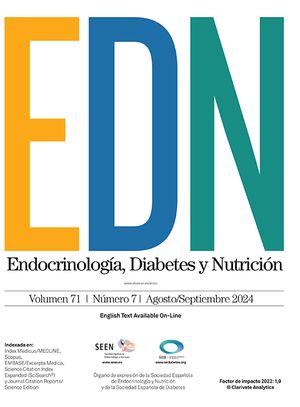El cuadro clínico del síndrome de la neoplasia endocrina múltiple tipo 1 comprende un amplio espectro de enfermedades, con afección de múltiples órganos endocrinos. Desde el inicio del diagnóstico genético, realizado por el estudio de leucocitos en sangre periférica, esta afección se ha podido diagnosticar de forma más precisa, con un seguimiento estrecho a muchos portadores asintomáticos de la mutación, basado en determinaciones hormonales y pruebas de imagen. En el caso presentado, se comenta el tratamiento de forma agresiva, según las técnicas de imagen, realizadas en una mujer de 26 años asintomática, portadora de la mutación del gen MEN1, con hiperparatiroidismo primario, hiperprolactinemia y tumor pancreático, con sospecha de metástasis hepática, según los hallazgos de la tomografía computarizada y la resonancia magnética, pero no en la gammagrafía. Se comentan las características del cuadro clínico, la genética, el diagnóstico y el tratamiento del síndrome de la neoplasia endocrina múltiple tipo 1, con especial énfasis en los tumores enteropancreáticos y las técnicas de imagen.
The clinical features of MEN1 syndrome include a wide range of diseases with involvement of multiple endocrine organs. The development of genetic diagnosis, performed through study of leukocytes in peripheral blood, has allowed more precise diagnosis and strict follow-up of many asymptomatic mutation carriers. This follow-up is based on hormonal determinations and imaging tests. We describe aggressive management based on imaging techniques in a 26-year-old asymptomatic female carrier of a mutation in the MEN1 gene. The patient showed primary hyperparathyroidism, hyperprolactinemia and pancreatic tumor with suspected hepatic metastases revealed by computed tomography and magnetic resonance imaging findings but not by gammagraphic images. The clinical features, diagnosis and treatment of MEN1 are described with special emphasis on enteropancreatic tumors and imaging tests.




